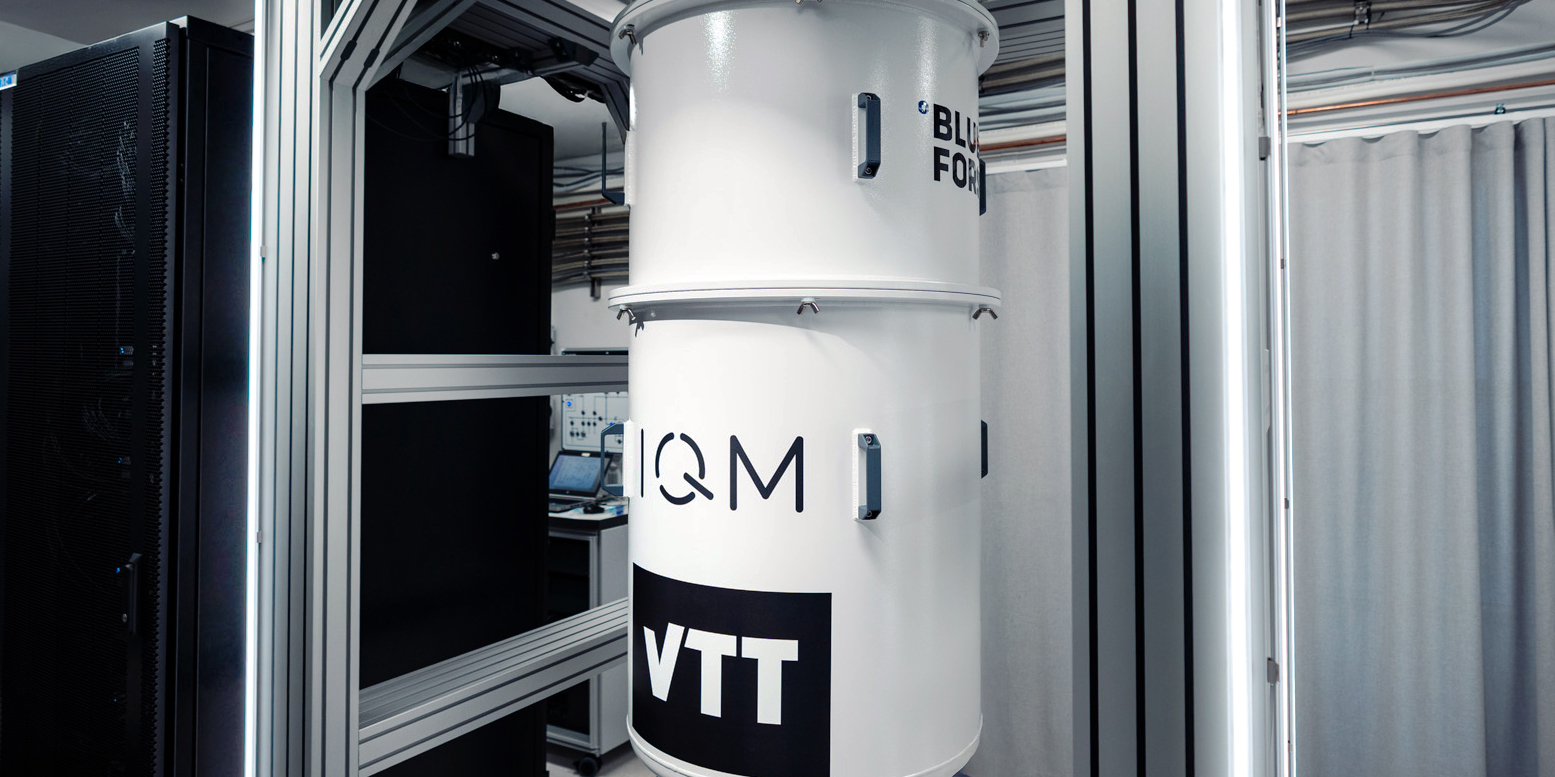Call for access to the new VTT 50-qubit quantum computer via EuroHPC LUMI is open
The Finnish quantum-computing infrastructure FiQCI reached an important milestone today when a new quantum computer was added to the service offering. The result of a four-year development project between VTT and IQM, a fifty qubit quantum computer called VTT Q50, was opened today for use by researchers and companies. VTT Q50 is Europe’s most powerful general-purpose quantum computer connected to a supercomputer. The quantum computer is built on Finnish expertise and technology.
The new quantum computer is integrated with the EuroHPC LUMI supercomputer. Access to academic use, i.e., researchers affiliated with Finnish higher education institutions and research institutes, is provided through the supercomputer LUMI, within the framework of the FiQCI project. The aim of the project is to strengthen the know-how and implementation of quantum computing in Finland by enabling companies and researchers to access a world-class quantum accelerated computing environment.
The first call for the academic use of VTT Q50 was opened today. Application instructions and a link to the application form can be found on FIQCI’s website.
VTT Q50 and LUMI can be used in hybrid computations, where some parts of the problem are solved using a classical supercomputer and other parts using a quantum computer. Quantum computing enhances classical supercomputing and vice versa, both supporting each other. LUMI enables, among other things, computationally intensive pre-processing and post-processing. For example, researchers can use LUMI’s massive computing capacity to interpret the results calculated by a quantum computer.
This opens up fascinating opportunities in both software development and end-user applications. From a software development perspective, the update enables, among many other things, the development of hybrid algorithms that combine classical and quantum computing, error mitigation techniques, and compilers of programming languages that account for and utilize the characteristics of quantum computers.
”Quantum computing can be used to answer many open questions and to make completely new scientific discoveries. Hopefully, the Finnish researchers will be among the first to shift the boundaries of science with this development,” said Olli Nurmi, Principal Scientist at VTT.
For end-users, applications such as quantum-enhanced optimization, simulating molecules and materials, and accelerating machine learning with quantum-classic AI models are gaining new momentum. Now, also parallel quantum computing can also be performed directly in a supercomputer environment.
”Through the new quantum computer, the national quantum computing environment has made an impressive and significant development leap. The baby steps are now behind us. Our customers can now take full advantage of world-class quantum accelerated supercomputing. This further strengthens Finland’s profile as a pioneer in quantum technology,” said Mikael Johansson, Director of FiQCI and Quantum Technologies Manager at CSC.
Photo: New 50-qubit quantum computer build by VTT and IQM. Copyright: IQM, Peter Franco.
Read more

Mikael Johansson
Mikael Johansson enables the uptake of quantum computing and communications at CSC, and develops quantum infrastructure as an integral part of the high-performance computing ecosystem.




